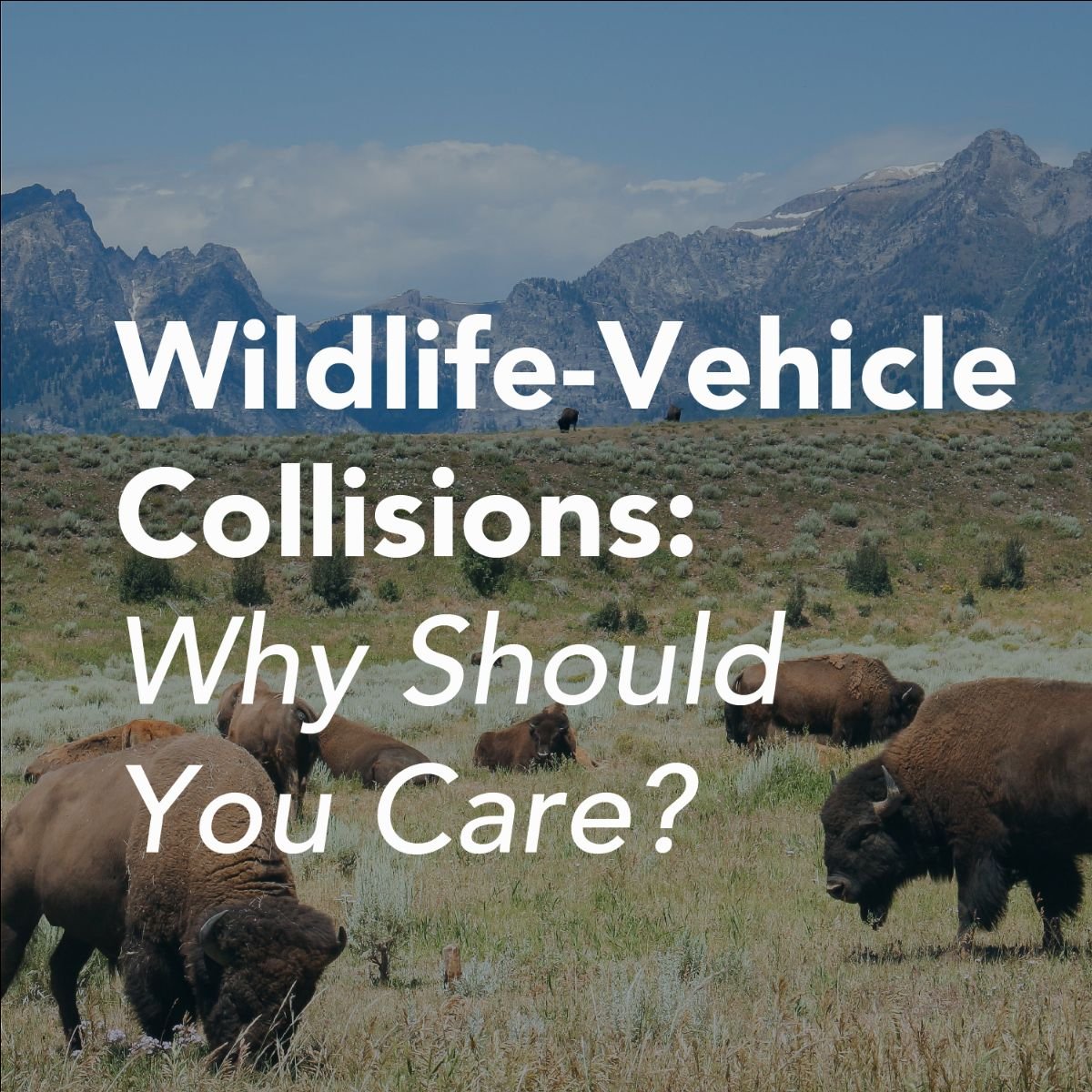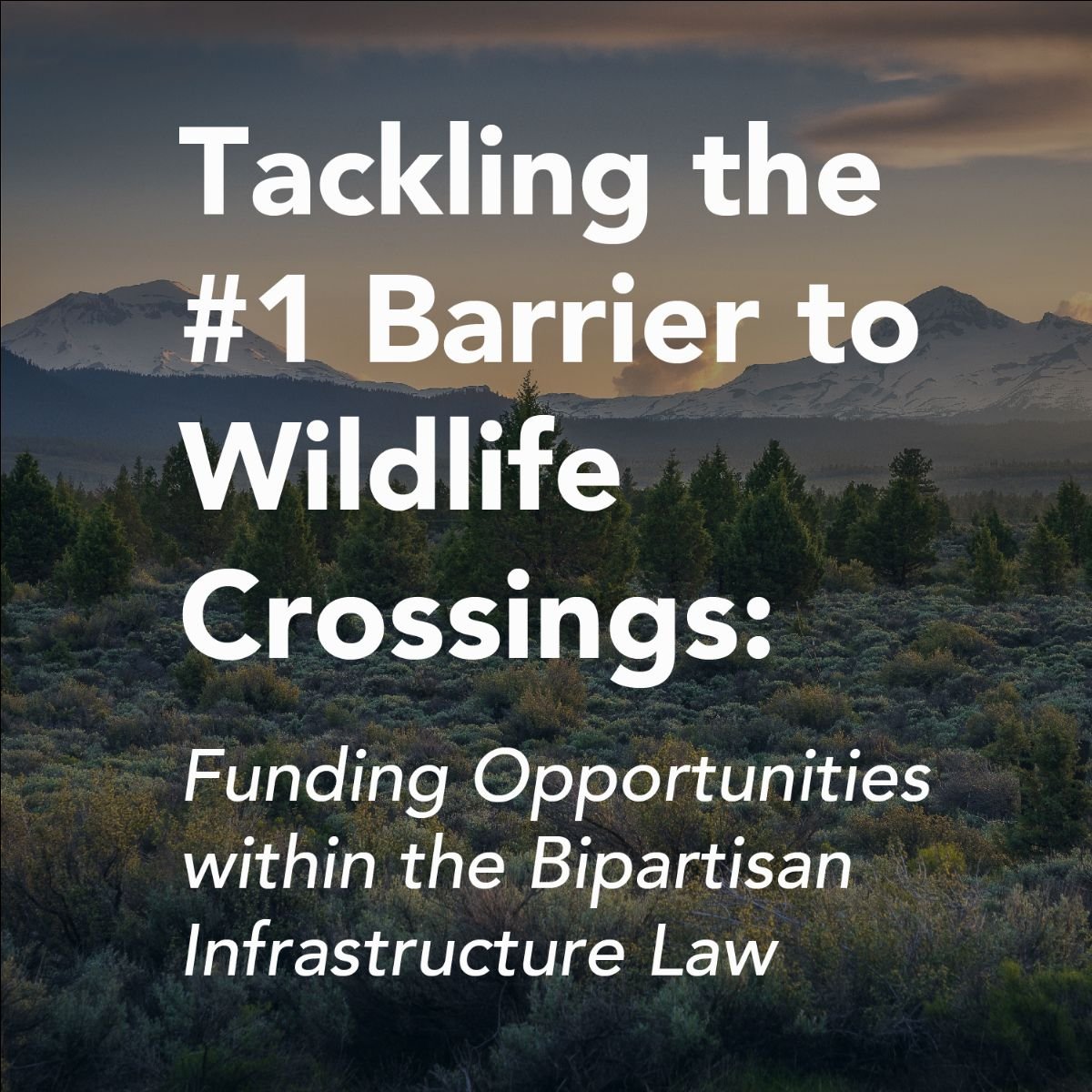Wildlands Network Wraps Up First Webinar Series to Demystify Wildlife Crossing Projects
From April to June, Wildlands Network held three webinars on wildlife infrastructure projects in partnership with ARC Solutions, the Center for Large Landscape Conservation, and the National Parks Conservation Association.
With the passage of the Infrastructure Investment and Jobs Act last November, billions of federal dollars were unlocked and made available to help local, state, tribal, and federal entities incorporate wildlife-friendly infrastructure into roadway designs. These webinars were designed to help these entities—and other practitioners—“demystify” how to plan for and implement wildlife crossing infrastructure projects.
Read on to learn more and watch recordings of each of the three webinars.
1. Wildlife-Vehicle Collisions: Why Should You Care?
The first webinar took a big picture look at the problem, solutions, and benefits of reducing motorist crashes involving wildlife and reconnecting habitat across roadways.
Patty Garvey-Darda, a wildlife biologist for the U.S. Forest Service, told our audience about the importance of the Snoqualmie Pass wildlife crossings that were implemented along a 15-mile stretch of highway in Washington State. The crossings help connect core habitat for endangered and threatened species living on Forest Service land which has been separated by the highway. This project has been a tremendous success story: wildlife vehicle collisions are now non-existent in the fenced half of the project area.
While Patty’s story gave viewers a full overview of a successful project, Rob Ament, Road Ecology Program Manager of the Western Transportation Institute, drilled down into the range of mitigation measures that can reduce wildlife-vehicle collisions and the costs and benefits associated with those various solutions.
Lastly, Scott Jackson, Extension Professor in the Department of Environmental Conservation at the University of Massachusetts Amherst, spoke to the audience about the value of maintaining and restoring aquatic connectivity. He identified the common barriers to fish and aquatic species passage, the detrimental effects of fragmenting these ecosystems, and the culvert, bridge, and other design considerations that can improve aquatic connectivity.
2. You Can’t Fix What You Can’t Measure: The Fundamental Role of Good Data in Successful Wildlife Crossings Projects
The second webinar looked at the role of data collection tools, "hotspot" analyses, and public-private partnerships in identifying where to invest in wildlife infrastructure.
Elizabeth Fairbank, Road Ecologist for the Center for Large Landscape Conservation, started with a talk about the importance of timing for data collection, how project goals inform data collection and analysis, and the various methods and tools of data collection.
Wildlands Network Senior Wildlife Biologist Dr. Liz Hillard discussed a range of data analysis options and modeling considerations to help prioritize where to put crossings.
Jeff Hunter, Southeast Regional Senior Program Manager for the National Parks Conservation Association, zoomed in from there to discuss how a coalition of public and private entities came together to collect data and prioritize several proposed crossing areas in the Pigeon River Gorge region of Western North Carolina.
Jens Hawkins-Hilke, Conservation Planner for Vermont Fish and Wildlife Department, also discussed his experience working with a coalition of public and private organizations as part of the Staying Connected Initiative based in the Northeast. Jens shined a light on some of the best practices for coordination among state agencies, NGOs, and other interested stakeholders, such as an agreement on what constitutes success, governance structure, partner engagement in decision-making processes, and implementation goals.
3. Tackling the #1 Barrier to Wildlife Crossings: Funding Opportunities within the Bipartisan Infrastructure Law
The third webinar provided an overview of new, expanded, and existing programs that can be used to pay for animal road crossing structures and other mitigation measures for wildlife.
Renee Callahan, Executive Director of ARC Solutions, reviewed the new federal funding opportunities to help pay for crossings that were unlocked by the infrastructure bill. She also covered what entities were eligible to apply for the funds, timelines for applying, and any matching requirements.
Tony Cady, Region Planning and Environmental Manager for the Colorado Department of Transportation (DOT), next presented on funding opportunities for crossings within the existing federal formula-allocation programs, including the Surface Transportation Block Grant Program and the Transportation Alternatives Program (TAP) set-aside, among others. He also discussed how best to get involved and engage with the state DOT on state-led programs.
Finally, Chris Slesar, Environmental Services Manager of the Vermont Agency of Transportation rounded out the webinar by doing a deep dive into the Monkton, Vermont’s community’s successful effort to secure two TAP grants (one for a feasibility study and the second for implementation) for two amphibian crossings. The final crossing is now an amphibian highway under the road. Even small mammals ended up benefitting from this new crossing.
All the webinars were recorded and are available on Wildlands Network’s YouTube page. A survey was also sent to all who registered, so our organizations can learn more about what webinars were useful and what topics might be helpful to explore in potential future webinars. For anyone watching the webinar recordings, we invite you to take the survey as well. We would love to hear from you so we can help further demystify how to best implement wildlife crossing infrastructure projects to make roadways safer for motorists and wildlife!




